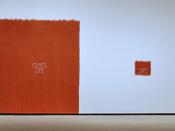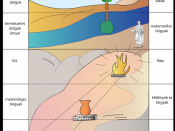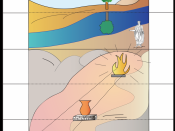a) Explain Plato's concept of "Forms" [33]
Plato, an ancient Greek philosopher living around 400 BCE, came to an belief that as well as the visible world, there was in fact another, separate 'world' which contained the 'Forms'. Forms are what Plato understood to be the reality that lies behind each concept and object in the visible world. Plato was exploring how the human senses know how to categorise objects, animals and concepts, however warped they may be from their mundane Form. He believed there to be a difference between that which we recognise with our senses and that which we understand with our minds, if able to access this 'world of Forms'. Plato thought that what we as humans see in the physical world is flawed, whereas the world of the Forms is perfect, eternal and beautiful.
Plato believed the Forms to be the source of all knowledge; material objects, or 'particulars' only appear to exist and are merely pale reflections of the Forms themselves.
One property of the Forms is that they are transcendent, meaning that they do not exist in space and time. For example a material object, a football, exists at one place at one time, its Form of roundness does not - Forms exist in a different way. The Form of roundness will never change, as it does not exist in time, or space as it can be in many places at one time. Even if all footballs and all round objects were destroyed, the property or 'Form' of roundness would still exist.
The Forms are also pure; they do not contain any other properties but their own. Taking the example of the football again - a football has many properties that, when put together, make it a football, for example, roundness, material...


